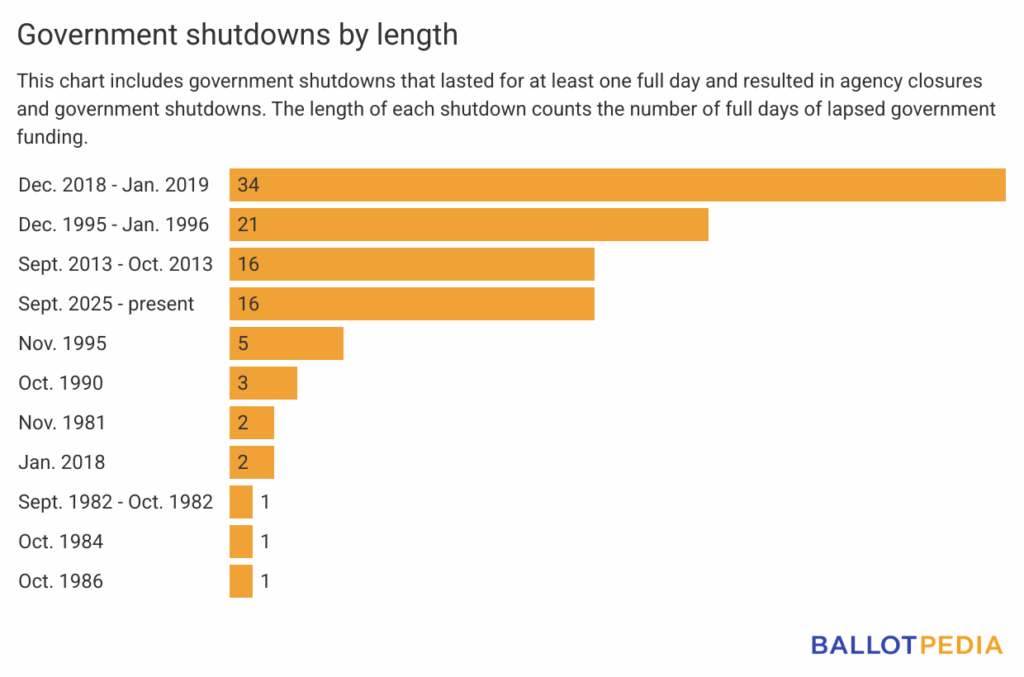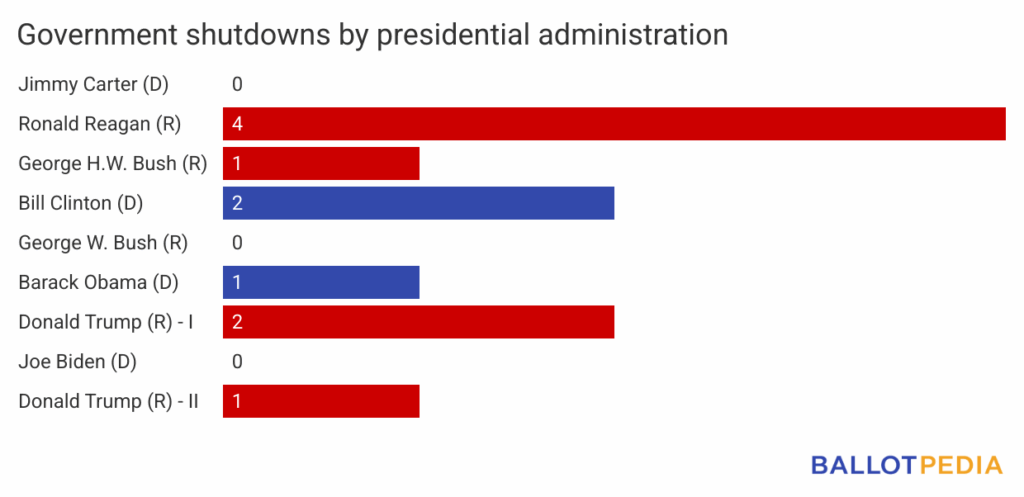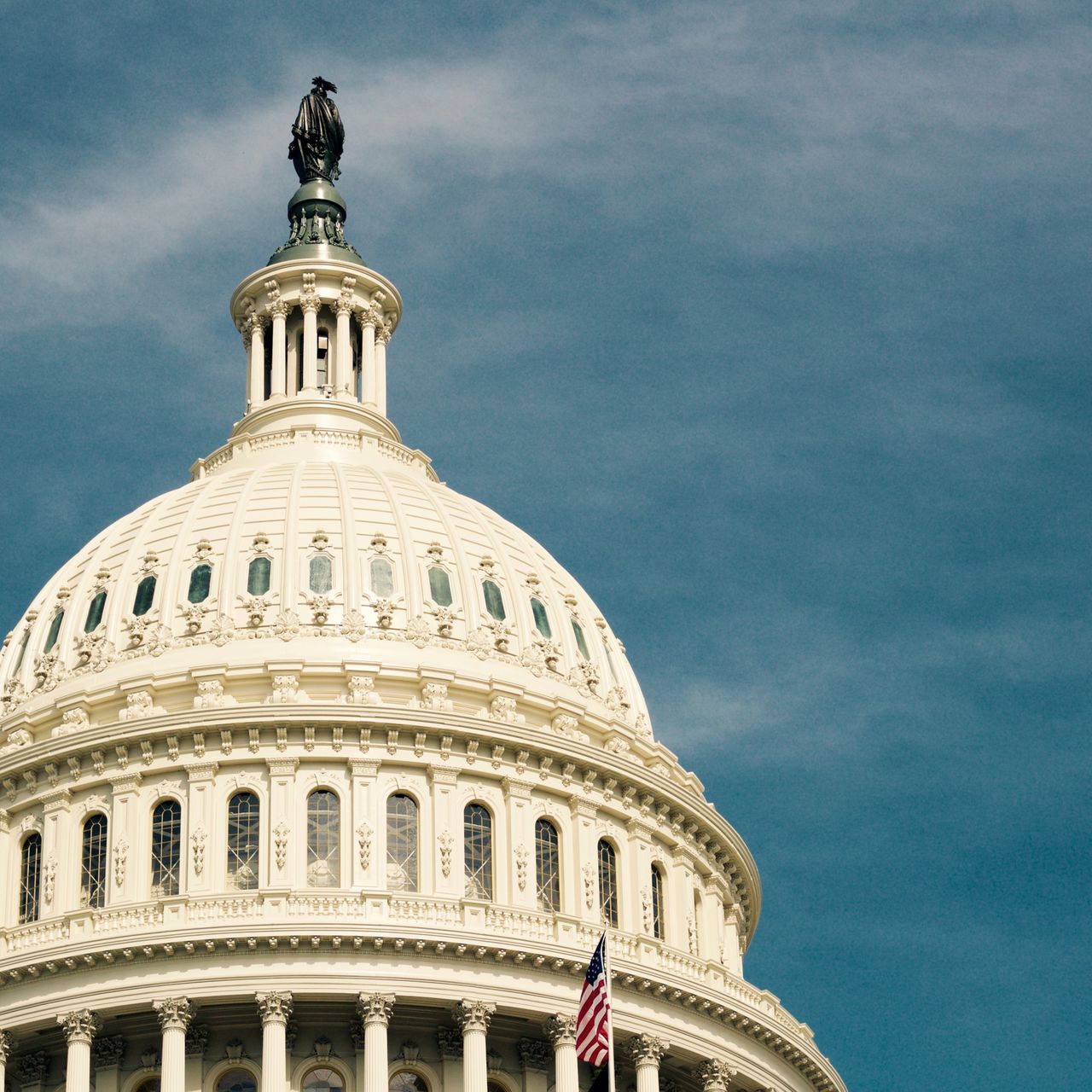On Oct. 16, the federal government shutdown became tied for the third-longest shutdown in U.S. history. At 16 full days long, it is tied with the 2013 government shutdown over an attempt to alter the Affordable Care Act (ACA). If the shutdown lasts through Oct. 22, it will become the second-longest shutdown, and if it lasts through Nov. 4, it will become the longest-ever shutdown.
There have been 11 shutdowns total in U.S. history that lasted for at least a day and resulted in agency closures and employee furloughs. See the chart below for the length of each shutdown.

This is the first government shutdown of the second Donald Trump (R) administration. There were two shutdowns during Trump’s first term, making him the president in office during the second-most government shutdowns (3). Ronald Reagan (R) oversaw the most at 4.

This is the third government shutdown to begin under a Republican trifecta, with the first two being the two shutdowns during Trump’s first term. The Dec. 2018 - Jan. 2019 shutdown began during a Republican trifecta, but ended under a divided government after the new Congress was sworn in. The other eight shutdowns took place fully under divided governments.
The current federal shutdown began on Oct. 1 after the Senate was unable to agree on a continuing resolution to fund the government for several weeks. Republicans and Democrats disagreed on whether to include the extension of premium tax credits for the ACA marketplace in the continuing resolution. A continuing resolution is a type of short-term funding bill that funds the government in lieu of a final budget. Continuing resolutions typically fund the government largely at previous levels, but can change the rate of spending, authorize the continuation of a pre-existing program, or provide funding for the duration of the continuing resolution.
To read more about the government shutdown, click here.


